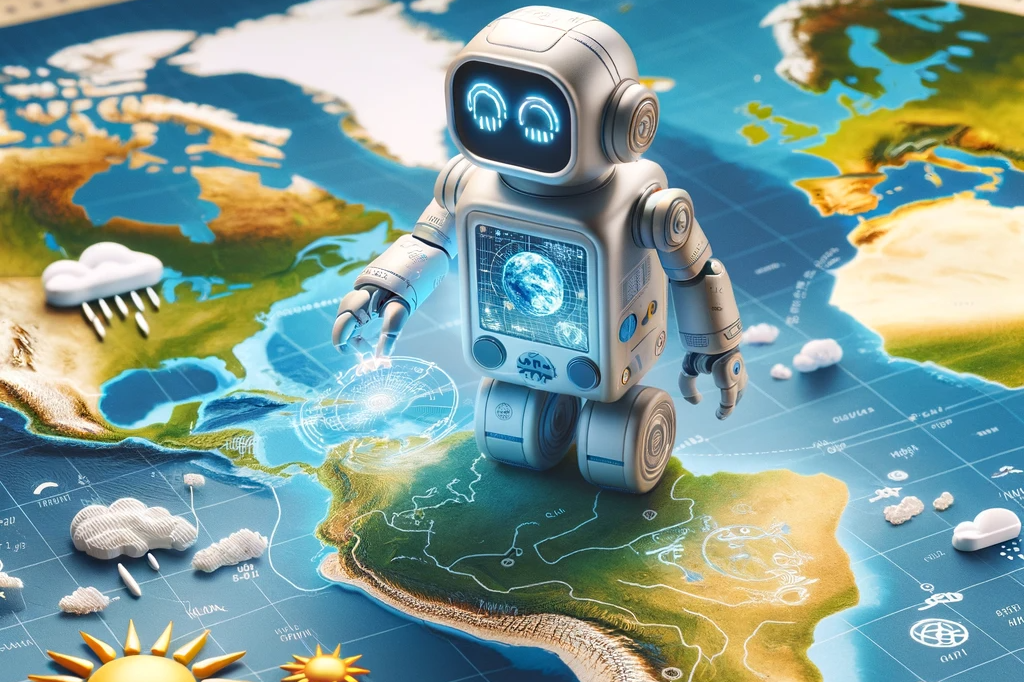In a groundbreaking development, Google DeepMind, the renowned artificial intelligence (AI) firm, has ventured into the realm of weather forecasting, unveiling a machine-learning model called GraphCast that has surpassed the performance of both traditional weather prediction tools and other AI approaches. GraphCast’s remarkable capabilities have the potential to revolutionize the field of meteorology.
GraphCast, a model that can operate on a standard desktop computer, stands out for its ability to provide more accurate weather predictions in minutes, a stark contrast to the hours required by conventional models. Computer scientist Aditya Grover at the University of California, Los Angeles, hails GraphCast as the current leader among AI models in the weather forecasting arena.
Weather forecasting traditionally relies on numerical weather prediction (NWP), which employs mathematical models based on physical principles to analyze data from buoys, satellites, and weather stations worldwide. These models offer precise insights into the movement of heat, air, and water vapor through the atmosphere but are notorious for their high cost and energy consumption.
To address these challenges, various technology companies, including Google DeepMind, Nvidia, Huawei, and startups like Atmo, have developed machine-learning models designed to swiftly predict future global weather patterns based on historical and current data. Among these contenders, Huawei’s Pangu-weather model has posed a strong challenge to the gold-standard NWP system at the European Centre for Medium-Range Weather Forecasts (ECMWF) in the UK.
The emergence of machine learning in weather forecasting has ignited a significant transformation, with AI models operating thousands of times faster than their NWP counterparts. This efficiency provides forecasters with more time for interpreting and communicating predictions.
GraphCast, crafted by Google DeepMind in London, has demonstrated its supremacy in global weather forecasting tasks when compared to both conventional methods and AI-based alternatives. By training the model with historical global weather data from 1979 to 2017, GraphCast learned intricate relationships among weather variables such as air pressure, wind, temperature, and humidity.
GraphCast utilizes the current state of global weather and estimates from six hours prior to predict weather conditions six hours into the future. By continually feeding earlier predictions back into the model, GraphCast can make forecasts up to 10 days ahead in less than a minute, surpassing ECMWF’s High RESolution forecasting system (HRES), which takes hours to produce similar predictions.
Notably, GraphCast excels in predicting weather variables near the Earth’s surface, as well as atmospheric variables at different altitudes, with an accuracy rate of over 90%. It has also proven valuable in forecasting severe weather events, including tropical cyclone paths, extreme heat, and cold episodes.
In a head-to-head comparison with Huawei’s Pangu-weather model, GraphCast emerged triumphant in 99% of weather predictions analyzed from a previous Huawei study.
Despite GraphCast’s exceptional performance, experts caution that machine-learning models are not yet poised to completely replace traditional methods. Instead, they complement conventional approaches by enhancing specific types of weather predictions, such as short-term rainfall forecasts.
Matthew Chantry at ECMWF suggests that it may take another two to five years before machine learning can be reliably applied for real-world decision-making in weather forecasting. Challenges include the opacity of AI models’ decision-making processes, referred to as the “black box,” and the potential for these models to amplify biases in their training data.
While machine-learning models hold immense promise for the future of weather forecasting, researchers must continue refining their techniques to ensure accuracy, transparency, and energy efficiency in the pursuit of more reliable and timely weather predictions.

